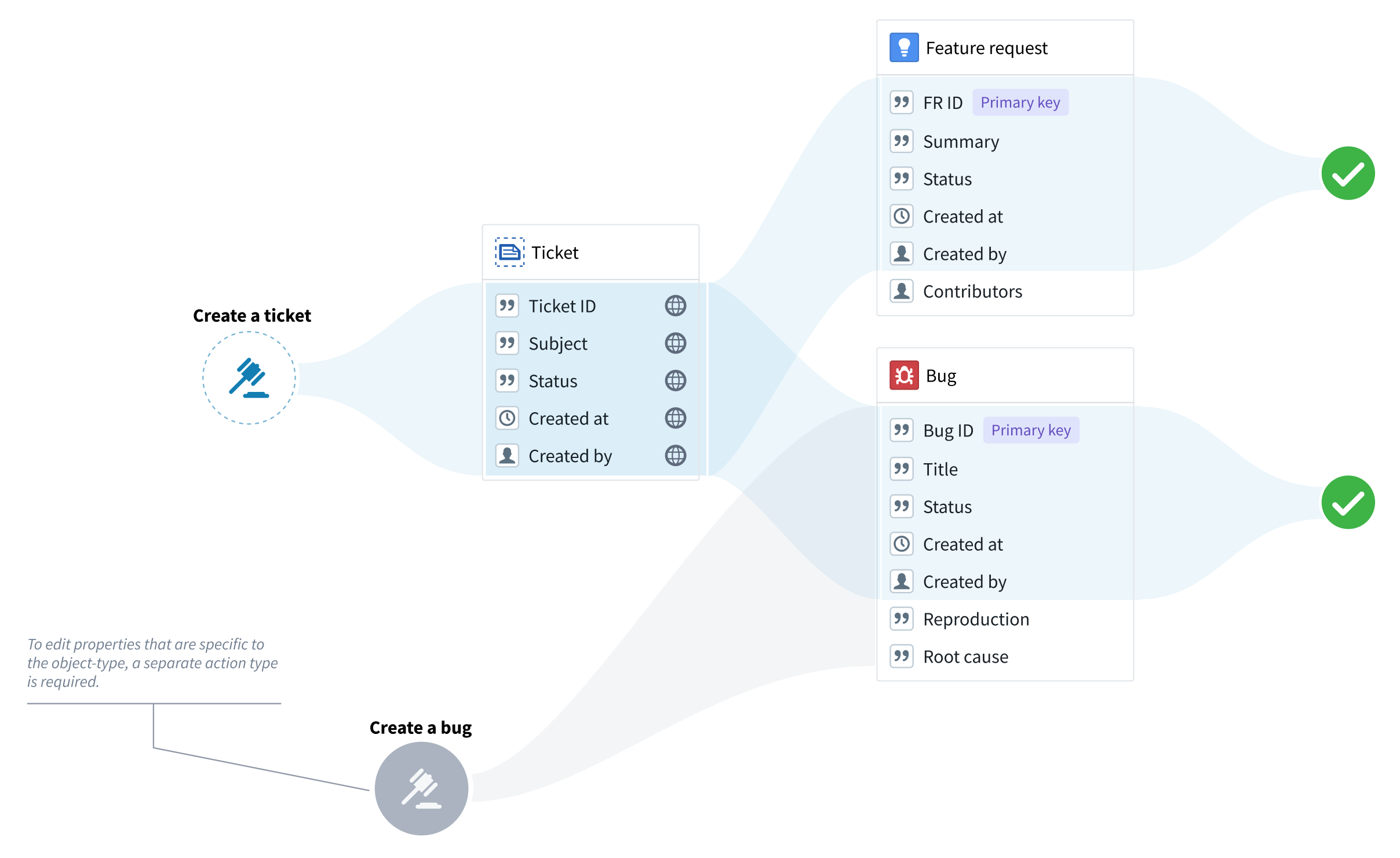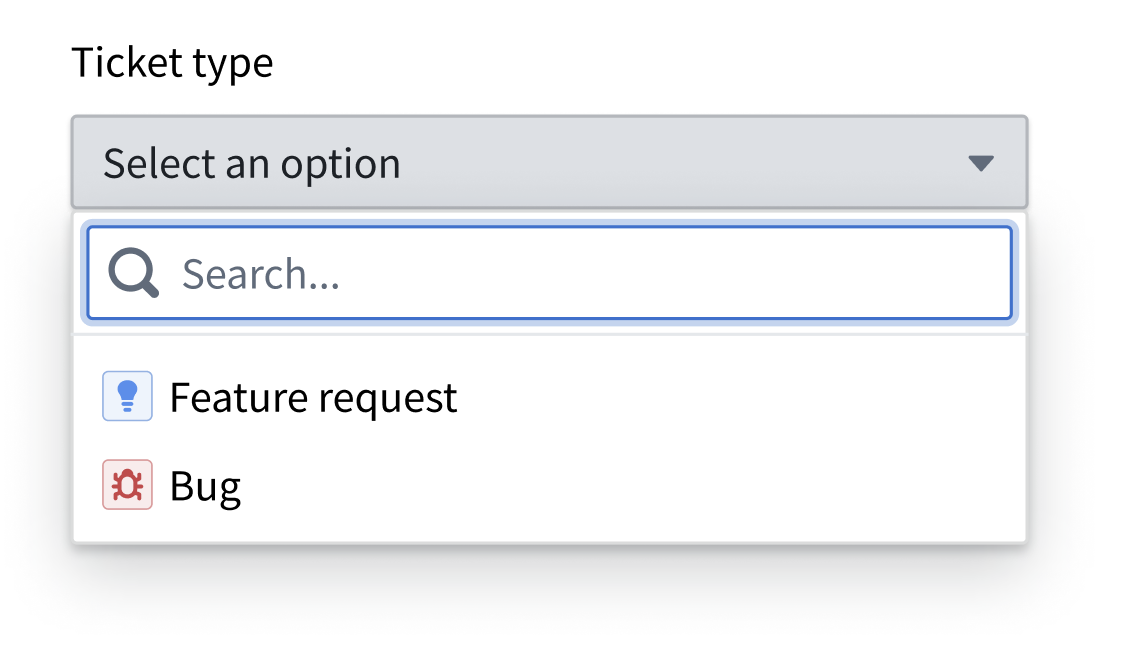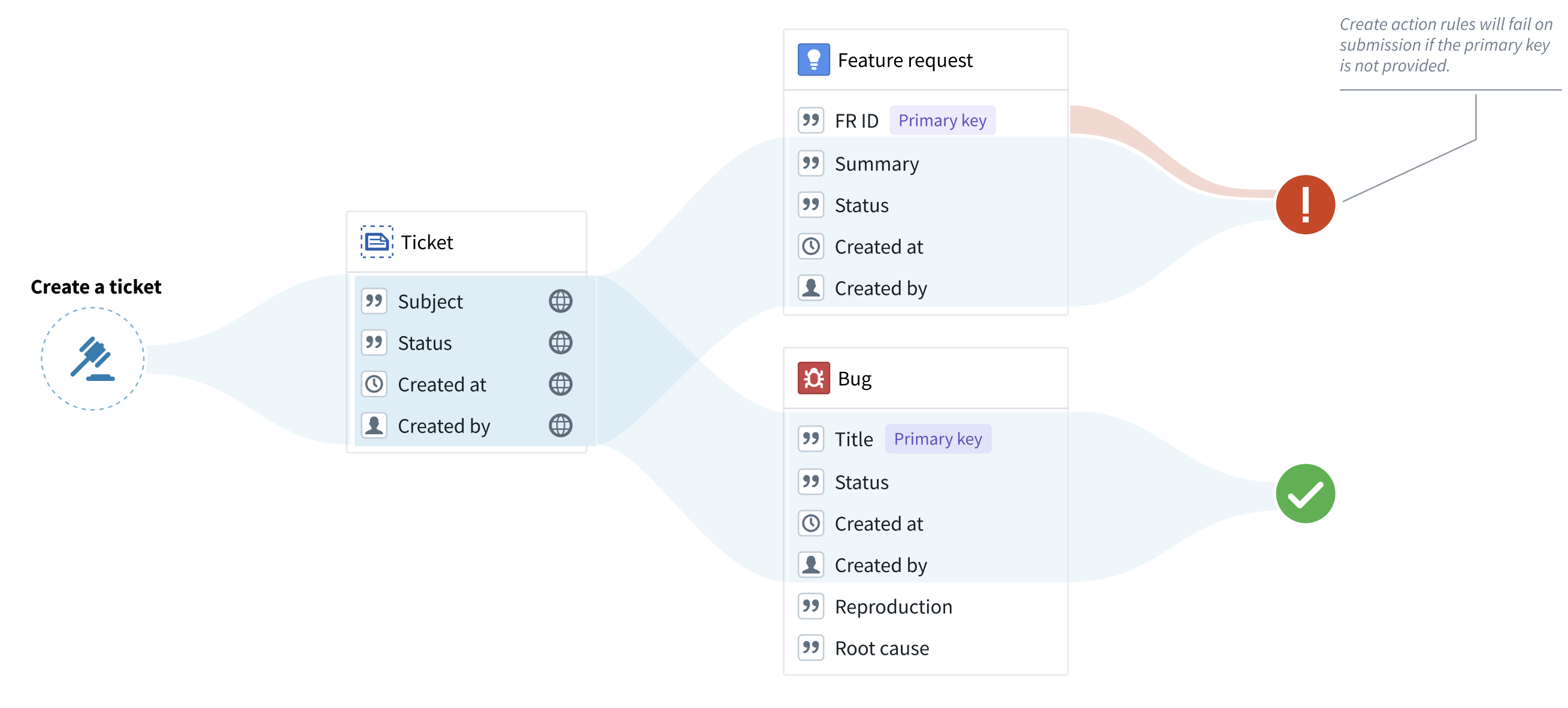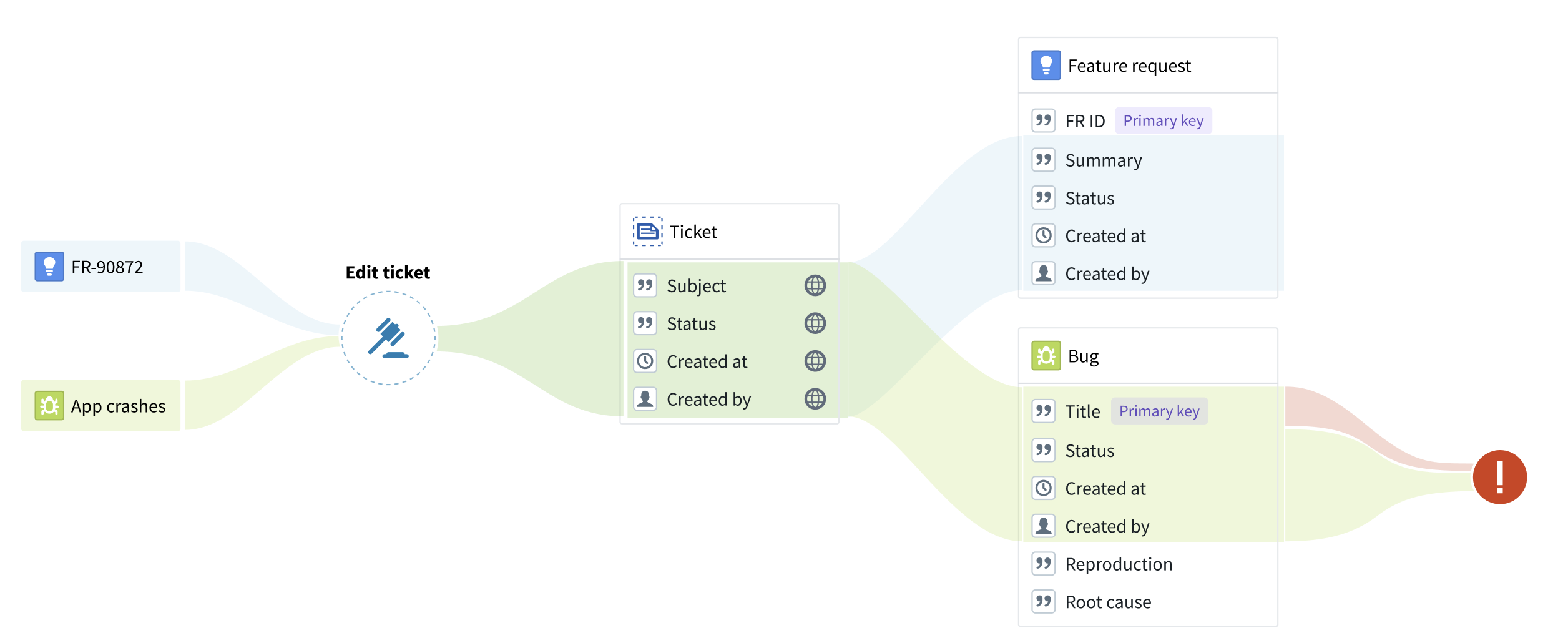Actions on interfaces
You can create generic actions that apply to all objects of a chosen interface. There are two main ways you can use interfaces from within actions:
- Interface action rules: To create, modify and delete objects of the configured interface.
- Interface reference parameters: To reference objects of the configured interface. This parameter is required by the "Modify" and "Delete" interface action rules, but can also be used by any other action rules.
Using action on interface rules
You can use interface action rules whenever the edits can apply to all the object types that implement the interface. In other words, you can use interface action rules only to modify the interface shared properties or to delete objects. For example, if “Feature request” and “Bug” are object types of the “Ticket” interface, you can use a “Create a ticket” action type to create bugs and feature requests, but you cannot create any property types that are specific to bugs or feature requests.

Creating a new interface action type
To set up a new interface action type, choose Action type from the New menu in Ontology Manager.
- Under Interfaces, pick the desired interface and rule type.

- Add the shared properties that you want to include in the action (if applicable).
- Add metadata to describe your action type. Remember that this metadata should apply to all the object types that implement the interface.
- Under Submission criteria, choose the users that can execute the action (you can apply more complex criteria later on). Remember that these permissions will apply to all object types that implement the interface, as long as the user has permissions to edit them.
- Select Create to finalize the action type.
“Create” actions on interfaces
Because the action type is only associated with an interface, an “Object type” parameter will be automatically generated to indicate the object type that should be created. If using a form or a table, the user will be prompted to pick an object type from a list.

Note that objects cannot be created without a primary key. Therefore, any object type without a primary key assigned in the rule will fail during submission. To avoid failures of this type, make sure that both the interface and the Create rule include an interface property that can be used as the primary key in the object types that implement the interface.

“Modify” actions on interfaces
"Modify" rules on an interface can modify any object of the configured interface. An “interface reference” parameter will be generated, constrained to the selected interface. The "interface reference" parameter is similar to the “object reference” parameter, with the exception that the "interface reference" parameter shows objects of any type that implements the interface. If using a form or a table, the user could then pick an object from a list.
Note that primary key values cannot be modified by any action type. Therefore, an action will fail on submission if the action tries to modify a primary key property for a selected object type. Always ensure that the action rule does not modify properties that are likely to be used as a primary key by some of the object types that implement the interface.
In the example below, the “Title” property is incorrectly used as the primary key for the “Bug” object type. The “Edit ticket” action will fail on submission because the action attempts to change the primary key of the bug.

"Delete" actions on interfaces
"Delete" action rules can have an "interface reference" parameter assigned to them, instead of an object reference parameter. This interface reference, constrained to a specific interface, will indicate the object to be deleted. If using a form or a table, the user could then pick an object from a list.
Executing actions on interfaces
Actions created with interface action rules can be applied to objects whose object type implements the interface, just like any object-specific action type. For a given object, all object-type-specific and interface-based actions that can be applied to that object will appear in the action dropdown.
Permissions
Interface action rules follow the same permissions as object action types.
See the documentation on action type permissions for more details.
Level of support
As support for interface action rules and reference parameters expands, availability will vary across the Palantir platform.
Supported applications and services
- Ontology Manager: Creation of interface action types and configuration of interface parameters in submission criteria and overrides.
- Object Explorer and Object Views: Rendering of actions defined on interfaces.
Limitations of interface action rules
- Action logs are not yet supported.
- Link edits are not yet supported (with the exception of 1-to-many links, accomplished by editing the foreign-key property).
- Actions on interfaces cannot be used with functions.